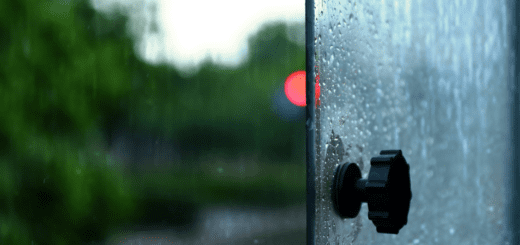How to Protect Your Desert Home from Outside Threats
Deserts are known for being harsh environments for people, plants, and animals because of the lack of precipitation and extreme heat. Despite this, there are millions of people who live in the deserts of the southwestern U.S. Those who live in these desert areas experience unique challenges when it comes to protecting their homes from damage.
There are four major deserts in the U.S., the Great Basin Desert, Mojave Desert, Chihuahuan Desert, and Sonoran Desert that cover large areas of the southwestern U.S. While these areas do not often experience severe weather, the harsh desert conditions could leadLead is a heavy metal that can be toxic to humans, especiall... More to problems within homes that can cause property damage. Homeowners that live in desert climates should be aware of the following dangers to their home and what they can do to keep their property protected.
Trees and Vegetation
The desert is home to many different plant species that thrive in the hostile conditions, including many species of cacti, agave, tumbleweed, yucca, brittlebush, creosote bush, and several trees including Ironwood and Palo Verde trees. If you have any of these plants in your yard, or want to plant new vegetation, make sure you keep a 2-foot barrier between the plants and your home.
When trees and other vegetation are too close to the home, several problems can arise. Bushes that grow against the side of the home may become overgrown and damage the home’s exterior. Tree branches that come too close to the home can also damage the siding and roof. Damage to the exterior of a home caused by vegetation increases the risk of water damage and makes the home vulnerable to problems with wildlife. Roof rats commonly invade homes by jumping between trees to get to the roof.
If there are trees and other vegetation close to your home, make sure to trimTrim is the decorative or functional molding used to finish ... More them back to create some space. It may be best in some cases for tree branches to be trimmed by a tree care professional. When planting new plants in your yard, plant them at least two feet away from your home.
Wind
Wind is the top cause of property damage and is even responsible for more damage than water and floodingFlooding is the overflow or accumulation of water in areas t... More. Deserts can experience strong winds as heated air near the desert surface rises which causes cooler air to move in and take its place. When the desert wind kicks up, it blows sand and other debris around as the ground has no moisture to hold these materials. The lack of vegetation cover in the desert also allows the wind to blow unimpeded.
Trimming tree branches and bushes away from your home as discussed in the previous section can help you avoid wind damage. You should also secure outside furniture and lawn equipment or bring them inside when there are strong winds, so these items do not become projectiles.
Sun Damage
The hot sun in desert climates can cause property damage in several ways. The harmful rays from the sun can damage shingles, window frames, and doors which leaves the home vulnerable to damage from wind, rain, and other elements. Sunlight shining into your home can also cause paint on walls, furniture, and artwork to fade.
Those who live in the desert can protect their home from sun damage by doing the following:
- Use window film: If sunlight is coming into certain areas of your home and causing fading of your walls, flooring, furniture, and artwork, you can help by having window film installed. Window film blocks harmful UV rays that cause fading.
- Change landscaping: Making changes to the landscaping around your home can help prevent damage to the exterior walls and foundation of your home. Make sure to use mulch for plants and bushes near your home as mulch helps capture and retain moisture. You can also plant shade trees to help protect your home from direct sunlight.
- Install awning: Installing awnings can further protect your home from sun damage by blocking out the sunlight and give you a place to spend time comfortably outside. There are awnings available that open and close manually or electronically.
- Light colored exterior: Darker colors absorb more sunlight than lighter colors which makes it a good idea for the exterior of homes in the desert to be lighter in color. Changing the color of your home’s exterior to a lighter color will reduce the amount of sunlight it absorbs which will decrease the risk of sun damage.
Water Damage from Weather
The desert is very dry, but that does not mean that desert homes are safe from water damage. It does not rain often in the desert, but when it does, it pours.
Desert rain often occurs as quick downpours and because the ground is baked hard from the heat, the rainwater does not get absorbed. This leads to flash floodingFlooding is the overflow or accumulation of water in areas t... More and a higher risk of water damage within homes and buildings. It is important for people who live in the desert to make sure they take steps to protect their homes from water damage.
Check your doors and windows for cracks or gaps and fill them with caulk. You should also check your roof for damaged or missing shingles and make sure that they are replaced. Keeping your gutters clean will protect your home from water damage as well by allowing water from your roof to drain properly away from the home’s foundation.
If your home is affected by floodingFlooding is the overflow or accumulation of water in areas t... More or water damage from heavy rain, it is best to call a water damage restoration professional to address the damage.
Professional Water Damage Restoration
The extreme conditions of the desert can cause several problems for homeowners, but following the tips described above will help you protect your home from the common threats posed by desert climates.
While taking these precautions can help protect your home from damage, there is still a chance that your home could be affected from excess rain or floodingFlooding is the overflow or accumulation of water in areas t... More. If your home experienced significant water damage from rain or floodingFlooding is the overflow or accumulation of water in areas t... More, you need to call a professional for water damage restoration right away. These professionals will remove the excess water and moisture using advanced equipment and restore the resulting damage.














